
Intel Announces FY 2015 Q3 Results: Strong Earnings Despite Client Computing Drop
Intel released their third quarter earnings for fiscal year 2015 today, and it was certainly a rocky quarter. Their revenue for the quarter was $14.5 billion, which was in-line with their expectations, and revenues were flat as compared to Q3 of 2014. They actually did very well to remain flat though since the Client Computing Group struggled due to the combination of PC and tablet sales. Gross margin was down slightly to 63%, and operating income and net income were also down 8% to $4.2 billion and $3.1 billion respectively. Earnings per share fell 3% to $0.66.
| Intel Q3 2015 Financial Results (GAAP) | |||||
| Q3'2015 | Q2'2015 | Q3'2014 | |||
| Revenue | $14.5B | $13.2B | $14.5B | ||
| Operating Income | $4.2B | $2.9B | $4.5B | ||
| Net Income | $3.1B | $2.7B | $3.3B | ||
| Gross Margin | 63.0% | 62.5% | 65.0% | ||
| Client Computing Group Revenue | $8.5B | +13% | -7% | ||
| Data Center Group Revenue | $4.1B | +8% | +12% | ||
| Internet of Things Revenue | $581M | +4% | +10% | ||
| Software and Services Revenue | $556M | flat | +4% | ||
| All Other Revenue | $682M | -5% | +19% | ||
In Q3, Intel launched Skylake which is their 6th generation Core processor, and the also announced their 3D X-Point memory technology. Sales of Skylake have just begun, and I would expect to see a broader rollout in Q4. The memory tech is still going to be a while before we see it in a purchasable product.
The biggest underperformer from Intel was the Client Computing Group. Revenue for this group was down 7% to $8.5 billion with platform volumes down 19%. This was somewhat helped by an increase in Average Selling Price (ASP) of 15%. Notebooks and desktops were down 14% and 15% respectively, and ASP for these units were up 4% and 8%. The PC market is certainly struggling despite the rollout of Windows 10 and Skylake. The free upgrade for Windows 10 certainly won’t be helping matters. But the biggest drop from Intel was in the tablet sector, where Intel powered tablet sales were down 39%. The tablet market is almost like a compressed version of the PC market when looked at over time.
Intel’s Data Center Group had a much stronger quarter. Revenue was $4.1 billion, up 12%, which was driven by platform volume up 6% and ASP also up 6%. Much of this was driven by growth in cloud computing which is growing even faster than Intel had predicted.
The remainder of their revenue came from Internet of Things which had growth of 10% to $581 million, Software and services had a flat revenue of $556 million, and the “all other” segment had 19% growth to $682 million.
Looking forward for Q4, Intel is looking for revenues of $14.8 billion plus or minus $500 million, which would be up 2% from Q3, and gross margin is expected to drop 1.0% to 62%. The drop in margin is attributed to a ramp up of their Ireland fab ahead of schedule which is outputting wafers at a higher cost than the more established fabs for the time being. In addition, the costs for 14 nm is still higher per chip than 22 nm, but the percentage of 14 nm to 22 nm is certainly shifting towards the newer process which drives down margins.
I think the overall quarter is actually fairly good for Intel. Despite a definite drop in the PC market, they managed to make up most of that with a strong showing in cloud computing. The ramp up to Skylake and Windows 10 should start in full in Q4. Intel seems cautiously optimistic that the rollout of Windows 10, especially in enterprise, should be much quicker than the last upgrade which should help sales.
Source: Intel Investor Relations
Read More ...
AMD Corporate Fellow Phil Rogers Leaves Company, Joins NVIDIA
With respect to both structure and personnel, the last few months have been busy – if not tumultuous – for AMD. The company recently reorganized itself so that their graphics division and its employees are once again a whole entity under Raja Koduri as the Radeon Technologies Group, as opposed to being dispersed among AMD’s various technical and organization groups. Meanwhile on the personnel front, last month AMD ace CPU architect Jim Keller stepped away from the company after completing his work on Zen. As it turns out, Jim is not the only recent high-profile departure from AMD; as discovered by HardOCP today and since confirmed by AMD, AMD Corporate Fellow Phil Rogers has left the company as well.
As one of AMD’s high-ranking technology & engineering corporate fellows, Rogers’ held an important position at AMD. For the last several years, Rogers has been responsible for helping to develop the software ecosystem behind AMD’s heterogeneous computing products and the Heterogeneous System Architecture. As a result, Rogers has straddled the line as a public figure for AMD; in his position at AMD Rogers was very active on the software development and evangelism side, frequently presenting the latest HSA tech and announcements for AMD at keynotes and conferences.
Consequently, though by no means the only person working on the software side of HSA at AMD, Rogers’ role in its development is an important one. Along with serving as a corporate fellow at AMD, Rogers was also a major contributor to the HSA Foundation, helping to initially found it in 2012 and serving as the Foundation’s president until he left AMD earlier this quarter. So if there is any one person at AMD that could have been classified as the face of HSA at AMD, then Phil Rogers would have been it.
Given his position within AMD, both on HSA development and as one of a small number of technology fellows (the highest technical rank within AMD), Rogers’ departure comes as a bit of a surprise. Prior to leaving the company, Rogers’ had been with AMD (and ATI before it) for 21 years, serving as a fellow for the last 8 of those years. AMD for their part isn’t saying much on Rogers’ departure beyond confirming that he left earlier in the quarter, however it should be noted that the company is currently in its “quiet period” before their Q3 earnings release on the 15th, which typically prevents companies from discussing personnel changes such as these.
From an HSA development standpoint Rogers’ departure comes at an interesting time. On the one hand HSA is still in its infancy, with the software ecosystem still being built up and AMD just now shipping their first full HSA 1.0 capable APUs with Carrizo. On the other hand the HSA Foundation did finish the HSA 1.0 Final specification earlier this year, and some of the other foundation members have announced that they’ll have HSA-capable designs available in the near future, so the initial work on HSA is done. In which case similar to Jim Keller this may be an AMD employee leaving now that they’ve accomplished their key technical tasks.
Meanwhile of equal interest is where Rogers has landed: AMD’s arch-rival NVIDIA. According to his LinkedIn profile Phil Rogers is now NVIDIA’s “Chief Software Architect – Compute Server” a position that sounds very similar to what he was doing over at AMD. NVIDIA is not a member of the HSA Foundation, but they are currently gearing up for the launch of the Pascal GPU family, which has some features that overlap well with Phil Rogers’ expertise. Pascal’s NVLink CPU & GPU interconnect would allow tightly coupled heterogonous computing similar to what AMD has been working on, so for NVIDIA to bring over a heterogeneous compute specialist makes a great deal of sense for the company. And similarly for Rogers, in leaving AMD, NVIDIA is the most logical place for him to go.
Wrapping things up, we may yet hear a bit more about Phil Rogers’ departure from AMD on the earnings call on the 15th. Otherwise it looks like it will be AMD’s Gregory Stoner who will be stepping up to the plate to replace Rogers. Stoner is AMD’s current Senior Director of Compute Solutions Technology and long-time Vice President of the HSA Foundation, and with Rogers’ change in employment he is now the managing director of the Foundation as well.
Read More ...
Apple Updates Their iMac Peripherals
In addition to introducing a new 21.5" iMac with 4K Retina display and an upgraded 27" iMac with 5K Retina display, Apple also announced some interesting improvements to their computer peripherals that will begin shipping with the new iMac models.
First up is the Magic Mouse 2. There's not a ton of changes here, and as you can see from the image above the form factor of the mouse is relatively unchanged from the last model. It now comes with a built in battery which should last a month between charges, and can be recharged using the built in lightning port. Apple claims they have also improved the design of the feet so tracking with be smoother. The use of AA batteries in the old magic mouse was definitely the biggest annoyance, and although I'm not a fan of it for ergonomic reasons, the Magic Mouse 2 seems like a worthwhile upgrade to anyone who uses one often and has to keep replacing or recharging their batteries.
Next is the new Magic Trackpad 2. This is arguably the biggest improvement of the three updates, although one could argue that the Magic Keyboard 2 takes that title. I personally think the new trackpad is the biggest improvement because it includes the Force Touch technology from Apple's MacBook trackpads. Like the MacBook, the Magic Trackpad 2 uses force sensors and an electromagnet to simulate the feeling of a traditional trackpad. This allows you to click anywhere, which was a problem with the diving board design of the previous version. The new Magic Trackpad 2 also has a 30% larger touch surface than the last model, and like the Magic Mouse 2 it has a rechargeable internal battery which can be recharged via a lightning cable.
Last, but not least, is the the Magic Keyboard. For me the biggest upgrade here is actually an aesthetic one, as the previous keyboard was a strange marriage of aluminum and plastic along with a barrel running along one side to elevate it and fit in batteries. The new design with its internal rechargeable battery pack looks much nicer and fits well with the upgraded Magic Trackpad. Apple claims they've improved key stability by 33% via the use of a new scissor switch.
If you're not a Mac user you probably won't be any more interested in these new accessories than the last generation, but they all represent notable upgrades for users who do use any of the existing Magic accessories. The new Magic Keyboard will cost $99, while the Magic Trackpad 2 is $129 and the Magic Mouse 2 is $79. What's interesting is that the higher price of the Magic Trackpad 2 also means that swapping it in for the Magic Mouse 2 with the new iMacs requires a $50 fee, which used to be a free swap with the previous models.
Like the iMacs announced today, Apple's new peripherals are already available for sale on the Apple Online Store and will begin shipping this week.
Read More ...
Apple Updates The iMac Line With a 21.5" Retina Model
Almost exactly one year ago Apple launched their first ever iMac with Retina display at their October 2014 event. The launch had a number of surprises, with one of the biggest being the fact that it would sell for $2499 despite its 5K display matching the resolution of Dell's UP2715K which had an intended launch price of $2999. While Apple doesn't appear to be planning any more events for this year, they have decided to ship an upgrade to their existing 27" iMac with 5K Retina display, and have also introduced a brand new 21.5" iMac with Retina 4K Display. You can view the specs for the base models of Apple's new 2015 iMacs in the chart below.
| Apple iMac With Retina Display 2015 | ||||
| Model | 21.5" Base | 27" Base | ||
| CPU | 3.3GHz Core i5-5675C/R (Broadwell) |
3.5GHz Core i5-6500 (Skylake) |
||
| GPU | Intel Iris Pro 6200 | AMD Radeon R9 M380 (2GB) | ||
| Display | 21.5" 4096 x 2304 IPS LCD | 27" 5120 x 2880 IPS LCD | ||
| Memory | 8GB 1867MHz DDR3 (LPDDR3 in 21.5") | |||
| Storage | 1TB 5400RPM HDD | 1TB 7200RPM HDD | ||
| Price | $1499 | $1799 | ||
Just briefly touching on the 27" iMac, it's mainly an upgrade to the internal hardware from its original Intel Haswell platform. The CPU in the base model is now a 3.5GHz quad core i5-6500 which is an Intel Skylake part, and the upgraded options include a 3.3GHz i5-6600 and what is seemingly the 4.0GHz i7-6700K which would typically be an unlocked part, although I wouldn't expect any overclocking to be accessible. The GPU is now AMD's R9 M380. The GPUs also move to AMDs M300 series, with an M380 in the base model, an M390 in the mid tier, and an M390X in the high end model, all with 2GB of GDDR5 memory. There's also the M395X with 4GB of GDDR5 memory available as a BTO option.
The 21.5" iMac is the most interesting of the two new devices purely due to it being a brand new machine. Apple calls it the iMac with 4K Retina display, and it means that there are now Retina display options for both display sizes of the iMac. Speaking of the display, it's a 21.5" 4096 x 2304 IPS panel, which is higher than the 3840 x 2160 UHD resolution shipping on most "4K" displays, and it has enough horizontal and vertical resolution to natively display actual DCI 4K content.
In addition to the 21.5" model's new HiDPI display, both models of the iMac receive a boost to their color gamuts. Apple is now claiming support for the DCI-P3 gamut which is used in digital projection movie theaters, and this has been achieved by moving from a WLED backlight array to something similar to GB-r LEDs in order to increase the range of spectral emissions. What will be interesting to see is if Apple allows users to revert to the sRGB color space, which would require the inclusion of a 3D LUT that could also be used for more accurate self-calibration than the past.
I do question the choice of DCI-P3 over Adobe RGB though. Apple claims that most cameras can capture a wider color range than sRGB, which is true, but in my experience they'll usually only offer Adobe RGB as the other option. The DCI-P3 gamut is more similar to Adobe RGB than sRGB is, but it's definitely not the same and so there will be some error there when working in Adobe RGB without the correct gamut on the display. That being said, the fact that both displays can natively display DCI 4K content means they could theoretically be used for video editing, but I question the viability of mastering films for cinema projection with the processing power available in an iMac.
Beyond the display, the 21.5" iMac with 4K Retina display seems to stick with Intel's Broadwell platform rather than Skylake, as Apple needs to ship a part with Iris Pro graphics in order to drive the display. The CPU used is the 3.3GHz i5-5675C/R, with it being unclear whether it's the C or the R SKU which would mean a socketed or a BGA CPU respectively. I doubt many people would be adventurous enough to open up the chassis and replace the CPU even if it was possible anyway.
Apple has also brought down the cost of the Fusion Drive upgrade, but it comes with a sacrifice. The 1TB Fusion Drive now only has a 24GB flash memory segment, while it was previously 128GB. Both the 2TB and 3TB Fusion Drive options still come with 128GB of flash storage. While the 1TB Fusion Drive may still be worth it on the 21.5" iMac purely due to how slow 5400RPM HDDs are, it's hard to stomach paying $100 for 24GB of NAND, and I would definitely just stick with the standard HDD if I were buying the base model 27" iMac.
Both new Retina iMacs are available for purchase on the Apple Online Store, with shipping times as early as one business day. BTO configurations will obviously take longer depending on which customizations are chosen. The 21.5" iMac with 4K Retina display starts at $1499. The 27" iMac with 5K Retina Display starts at $1799, with the 3.3GHz upgraded model at $1999 and the high end 4.0GHz i7 model at $2299.
Read More ...
Build-A-Rig Round 2: SilverStone and Crucial Interviews and $800 Back-To-School PCs
Last quarter we introduced our new Build-A-Rig project. At a high level, we ask two or three companies in the PC industry each round to configure a system to a budget. Then, with our partners Newegg, we build and test each system in glorious battle, along with interviewing the participants about how they approach the industry. Regardless of the winner, all the systems built are given away to our lucky readers. Imagine Top Gear UK’s ‘Star In A Reasonably Priced Car’, but instead of celebrities racing around a track, we let the configured PCs do the racing where both style and performance count. In this round, given the timing as school is starting, we chose SilverStone and Crucial with a budget of $800 for a back-to-school system.
Read More ...
Apple's New "Magic" Peripheral Line Packs High Tech, High Prices
Scissor Keys, Force Touch, Li-Ion Batteries make their way into the peripherals
Read More ...
Quick Note: Windows 10 Insider Preview Build 10565 Fixes Boot Camp 6.0 Issues
New build tunes up Windows 10 into fine form
Read More ...
Available Tags:Intel , AMD , NVIDIA , Apple , Windows ,

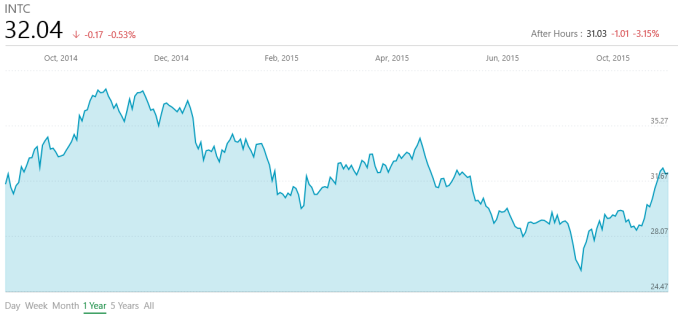
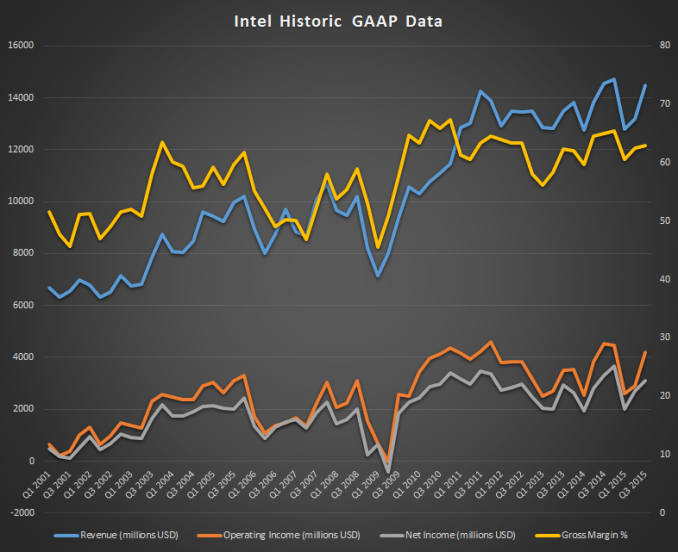



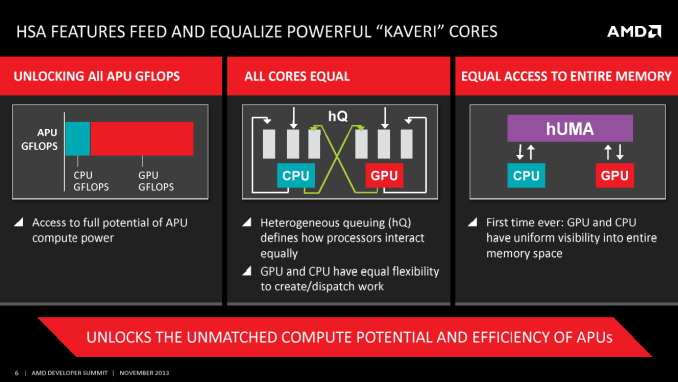
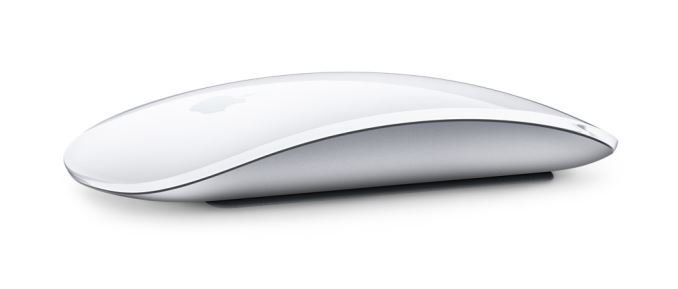


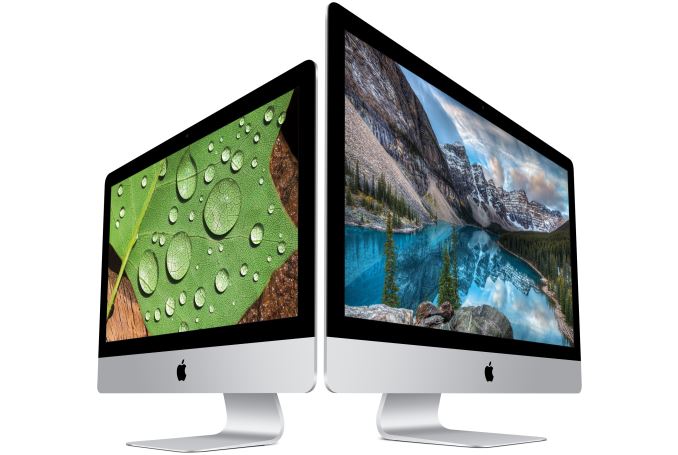
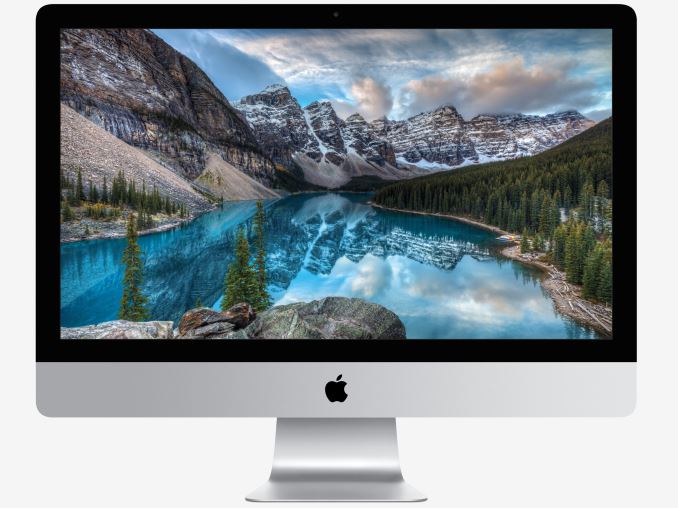
No comments:
Post a Comment